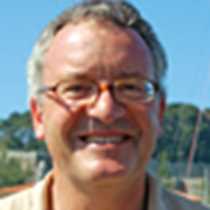Iona & Staffa, Scotland
The inimitable Dr. Johnson referenced Iona in his classic account of a journey taken in these waters in 1773, A Journey to the Western Islands of Scotland, in which he makes the classic case for travel in any age: “That man is little to be envied, whose patriotism would not gain force upon the plain of Marathon, or whose piety would not grow warmer among the ruins of Iona.”
Iona is indeed a very special place and few are impervious to its spiritual atmosphere. It has long been a place of pilgrimage. It the cemetery beside the abbey church lie the mortal remains of High Kings of Scotland, of Norway and Lords of the Isles, that remarkable polity that was an amalgam of the Gaelic and Norse worlds of northern Britain in the Middle Ages. Its renown derived from the fact that Iona was where Columba established his monastic community in AD563 bringing Celtic Christianity from its western redoubt in Ireland where it flourished in the sixth century as the light of the Christian faith was extinguished in continental Europe following the fall of Rome. From Iona, the faith spread to the Pictish lands to the east and then to the Anglo-Saxon kingdom of Northumbria to the south. It was on Iona that the Book of Kells was produced, one of the glories of early mediaeval western art.
The ecclesiastical buildings that enthrall visitors to the island today all post-date the Celtic Christian period, the ruins of an early thirteenth-century Augustinian Abbey constructed of pink granite from the neighboring island of Mull, an early Romanesque chapel and the restored the Benedictine Abbey, the latter the base of the contemporary Iona community. Founded in the 1930s by the redoubtable George Macleod, then a priest with the disadvantaged community of Govan in Glasgow as his parish, his vision was to restore the abbey so that the island would become an ecumenical centre of renewal for the Christian churches of these islands. In the 1930s this seemed an unlikely project but it succeeded and a group from the ship opted to attend the short afternoon service for peace and justice that is held daily in the abbey at two o’clock in the afternoon. Macleod famously described the island as “a thin place” where the boundaries between the material and the spiritual are to be found in close proximity. It is an island of great physical beauty, at its best as today in midsummer sunshine. For birders, the island is famous and one of the last strongholds of the corncrake whose distinctive rasping call was much in evidence in the flowery meadows of un-mown hay in the vicinity of the abbey.
We ended the day with an after dinner cruise around the neighboring island of Staffa, with its celebrated columnar basalt Fingal’s Cave, that has attracted numerous travelers in the past from Sir Joseph Banks to Queen Victoria and, of course inspired Felix Mendelssohn to compose his Hebridean overture.




